Puppies are just like kids - the grubbier they get the more happy they are! Even as your dog matures you will discover he has an inclination to roll in something horrid if he gets the chance. Puppy hair is, to some extent, self-cleaning - but not to the point that your pup will never require a bath! There will be times when you have to do some puppy grooming and bath your pup - so get your puppy familiar with the practice as early as possible.
If you have a long haired type of dog you will have to do frequent puppy grooming - less so for the short or smooth coated breeds. Let's have a look at the various kinds of grooming you might have to do, depending on breed, and then take a look at how to go about bathing your puppy.
Puppy Grooming for Different Breeds
Smooth coats such as Boxers and Whippets are the easiest to care for. Use a chamois, hound glove or a soft bristle brush. To begin with brush against the direction of the fur, then go with it. This will release and get rid of any loose dead hairs. Those that have a denser coat with an undercoat - like Labradors - need extra grooming since they moult a great deal more - as anybody with a Lab will inform you! Use a bristle brush for them, and finish off with a comb paying specific attention to the tail and neck anywhere the coat is densest.
Treat wiry-coated puppies in the same way, however these will also need to have the longer hair 'stripped' once a month using a stripping comb. You will additionally have to take these breeds - Wire haired Dachshunds and Fox Terriers for example - to a specialist groomer roughly 3 or 4 times a year to have the coat reduced.
Certain dogs have long silky fur - Yorkshire Terriers and Maltese - and call for particular treatment. They have little undercoat so you should be very gentle, particularly as they need grooming every day. Begin the puppy grooming as soon as you get your dog to acclimatize him. Other breeds have long but dense coats, such as Collies, and these just need twice weekly brushing with a pin-brush and combing with a wide-toothed comb. Excess hair will require to be cut once a month. Golden Retrievers and others with less dense hair need less attention - weekly brushing and combing and a twice yearly trim for legs and toes.
Other breeds need regular - often weekly or even twice weekly - expert trimming and clipping. Poodles and Bichon Frise for instance will need a great deal of grooming so you will need to get your pup accustomed to these repeated trips for puppy grooming from the beginning. Unless you are actually trained to do this clipping do not attempt it yourself - leave it to the specialists.
Get your pup accustomed to grooming as soon as he comes to live in your home. When you have fed your pup and played for a bit so that he is not so energetic, sit down with him on the floor. Start off by stroking and massaging his coat with your hand, at the same time as speaking gently and calmly. Next gently present the brush, rewarding with praise and a treat if he is calm and well behaved. Don't let him mess about with or chew the brush, or else he will believe it is a game. Remain in control right through the procedure. Start with only a few strokes of the brush, steadily building up to a full grooming session. As always patience and time will be rewarded with achievement.
Puppy Grooming - Bathing Your Puppy
You do not need to bath your dog each time he gets a lttle bit grubby - simply take off any dry mud with a brush and perhaps put him in a bowl of water to wash down his feet. Store old towels especially for puppy grooming use.
The time will come, though, when your puppy needs a bath. If your puppy is smelly then bath it! However, if the odor comes back immediately then it may point to a canine skin condition so get guidance from the vet.
It is not generally necessary to bath any pup more than twice a month and too much washing is harmful for the dog's skin. Begin early on to get your pup familiar with baths and try to make it routine, with as little excitement as possible. For large breeds, get someone to assist you as a wet puppy can be quite heavy!
If it is warm weather, then bath your pup outside with a spray attachment on a garden hose if you have one. If not then use your own bath or shower, or even your sink if it is a small dog. Ensure the water is not too hot or excessively cold. Use a proprietary puppy shampoo or baby shampoo - just make sure it is very mild. Damp the pup all over before using shampoo and gently massage into the coat. Be careful around the mouth and eyes and do not get water in the ears. Talk and reassure your dog all the time and reward him when he is good. Rinse very carefully as residue shampoo on the skin can start a reaction and disturb the balance of the skin.
Rub puppy briskly with a towel to get rid of excess water. You can make use of a hair-dryer to dry your dog - set on a low temperature. He might be anxious initially so you may need to acclimatize him with puppy noise training first. In warm weather you can dry dog outside, but if it is cold then make sure he is totally dry before letting him outside.
If your pup is anything like mine, the first thing he will do after a bath is to find something to roll in! However don't lose sleep - that is the fun of puppy grooming!

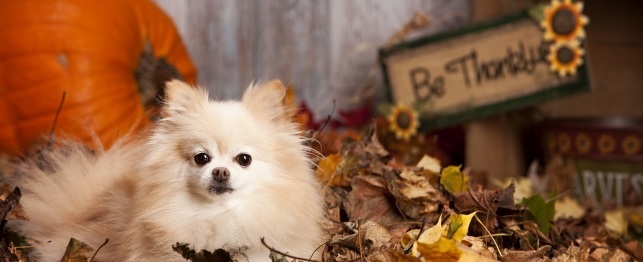 Thanksgiving Dangers: Tips to Prevent Common Problems in Your Dog
Thanksgiving Dangers: Tips to Prevent Common
Thanksgiving Dangers: Tips to Prevent Common Problems in Your Dog
Thanksgiving Dangers: Tips to Prevent Common
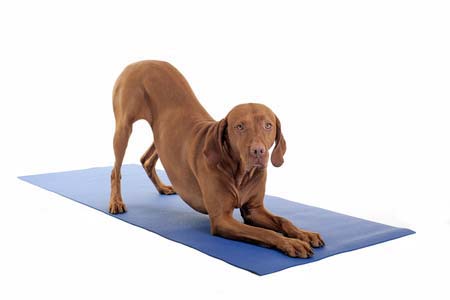 Shedding Light on Shedding
Dogs Shed for a Variety of Reasons
Shedding Light on Shedding
Dogs Shed for a Variety of Reasons
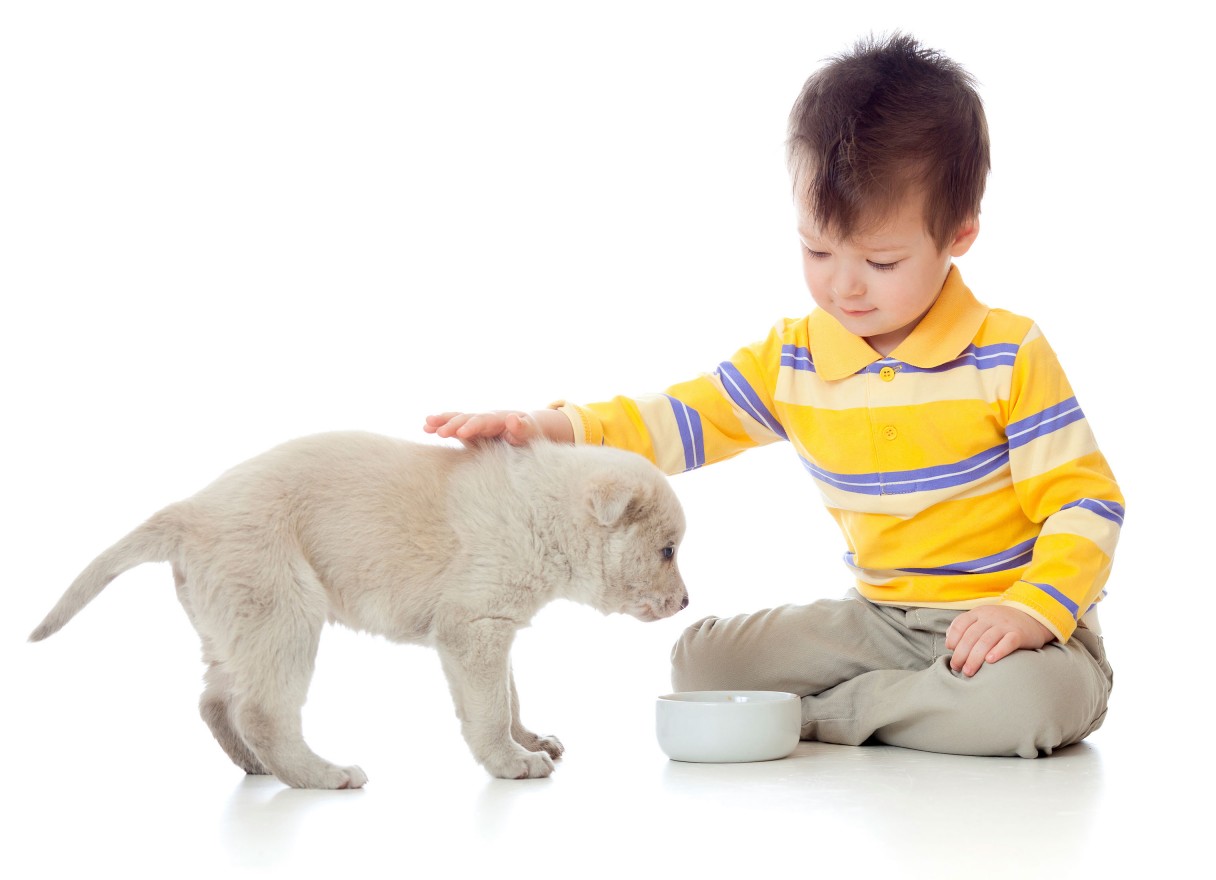 Raising a Healthy Dog Begins with Proper Puppy Diet
Raising a healthy dog takes more th
Raising a Healthy Dog Begins with Proper Puppy Diet
Raising a healthy dog takes more th
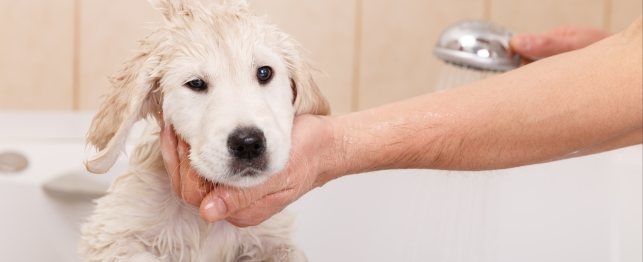 Bathing Your Puppy
Bathing Your Puppy
Bathing Your Puppy
Bathing Your Puppy
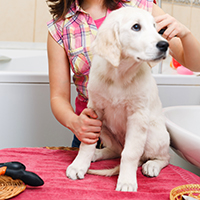 A Bonding Opportunity: Groom Your Dog
A Bonding Opportunity: Grooming You
A Bonding Opportunity: Groom Your Dog
A Bonding Opportunity: Grooming You